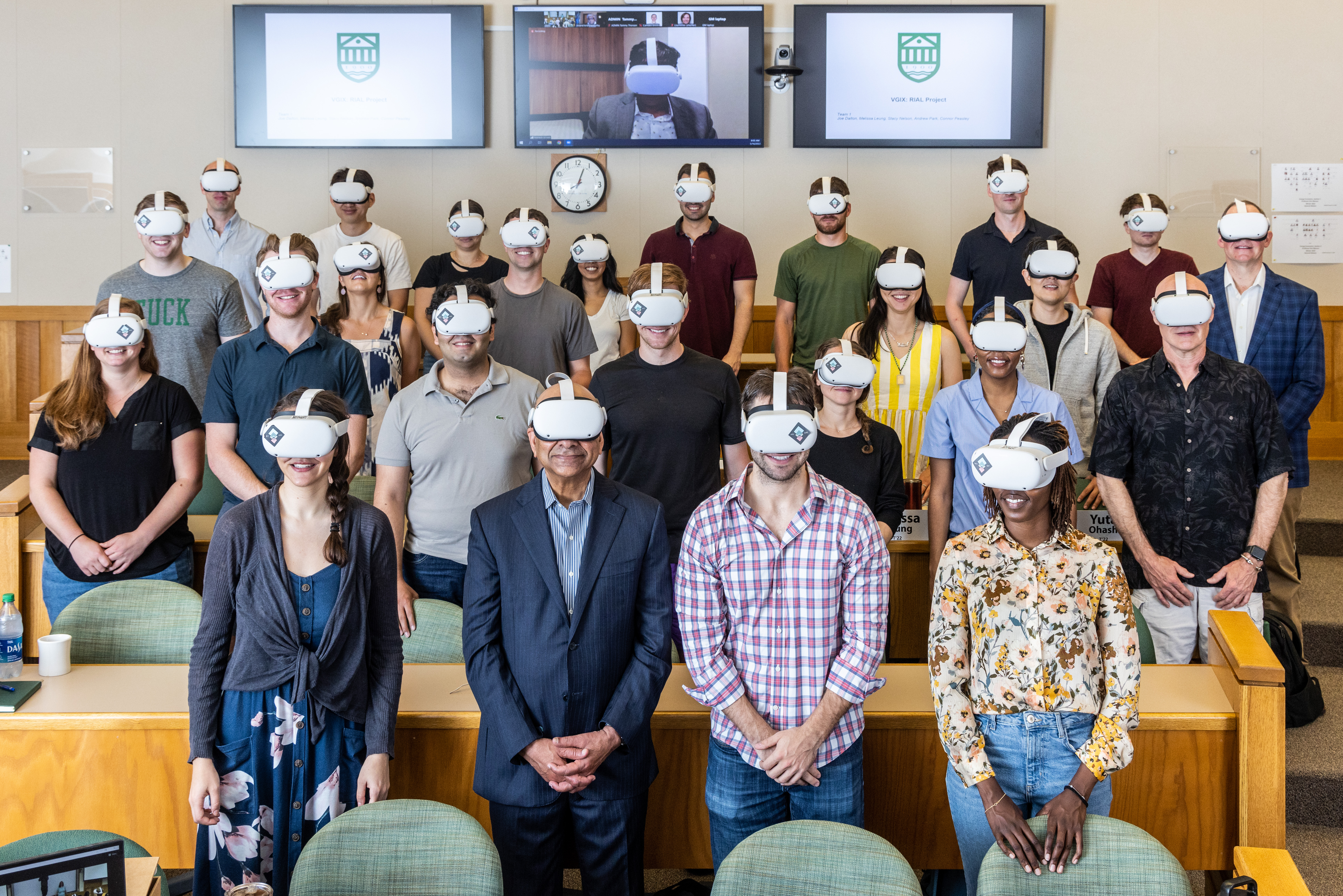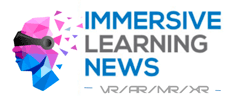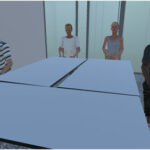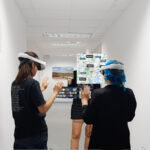Can VR and AR Foster Deeper Learning? Lessons from a Pilot Course
ducators and business experts believe that the vision of a metaverse, built on fast-developing virtual technology and augmented reality, has the potential to transform business education. Consider a European business school sending students on a tour of five factories across Asia, Europe, and the United States to interview managers and analyze day-to-day operational efficiencies and best practices—all experienced via virtual reality (VR) headsets, 3D videos, and avatars.
Or consider that by wearing VR headsets, 30 MBA students in the United States can visit the homes and follow the daily lives of four families in southwest India to assess consumer needs in the healthcare and wellness sector. In yet another example, French business school students attend classes from any country, not having to interrupt their core program work while they do international internships or conduct research abroad. Via a personalized avatar, students can access a fully virtual campus’s classrooms, social activities, and services 24/7.
French B-schools have emerged in the vanguard of this space, with ESSEC introducing VR-based classes last year, INSEAD using VR in both its executive education and degree programs, and NEOMA creating a completely virtual campus that allows educators and students to interact with each other and the school as if they were on a physical campus. Yet it seems that few B-schools overall, particularly in the United States, are making similar progress in either graduate or executive education programs. The metaverse is admittedly in its infancy; still, now is the time for business schools to start learning the technology and exploring the ways it can be molded and used.
That’s why I set out to create a global experience at Tuck School of Business that blends technology and pedagogy. Here I will share my experience in developing a pilot course for second-year MBA students in which we applied VR technology. In a subsequent article, I will delve further into the technology at this point in its development and explain what steps business schools can take to envision and plan for an MBA in metaverse.
The Context: Transforming the Classroom Experience
In the delivery of business education, little of which has changed in the last 100 years, experimentation has now become critical. New technologies—videos, simulations, Zoom, and virtual whiteboards—can make existing programs better. But do they fundamentally change the way academics teach or managers learn?
The first generation of digital disruptors in education were massive open online courses (MOOCs)—courses from edX and Coursera to Lynda.com, Udacity, Udemy, and 2U.com—which had wide-ranging impact on business education, including lowering costs, expanding access, and introducing a new model for delivery. Now, the metaverse has the potential to take this initial disruption to the next level by transforming the classroom experience. A key element of the metaverse, technologies such as VR and AR, are game changing. They not only have many advantages over 2D technologies such as video; they can also improve upon analog experiences in some cases.
“In the delivery of business education, little of which has changed in the last 100 years, experimentation has now become critical.”
To transform the MBA now, it has become necessary to experiment with learning experiences outside traditional formats and campus settings. While VR is a key element of the metaverse and was key to the global nature of the course I developed, my objective—then and now—is not to focus on a few specific new technologies. The goal is to learn how to use digital technologies in innovative and targeted ways to foster deeper learning. The aim is not to replace traditional courses with VR courses, but to explore how these nascent technologies can augment the learning experience.
The Experiment: Learning Through a Truly Global Lens
When the ebb and the flow of the pandemic made global travel difficult in the summer of 2021, I decided, with the support and encouragement of my dean, to experiment with virtual reality.
The pilot was launched in an elective half-course on reverse innovation, in which second-year MBA students were tasked with investigating health and wellness-related problems faced by Indian families. The goal was to explore “wicked problems”—entrenched, seemingly intractable issues—and provide solutions that could be applied in both developing and developed areas of the world.
Videos were made specifically for the course using 360 VR cameras and 2D cameras (see sidebar for more information), usually in the subjects’ workplaces and homes. The VR films provided critical information about the economic, cultural, and social contexts of families from India’s southern state of Tamil Nadu. Then, using Zoom, student teams met with and interviewed the family members. For those MBA students—many of whom had never encountered people who live at the base of the economic pyramid—VR helped develop a fresh appreciation for a global reality in a uniquely engaging manner.
We launched the pilot class in the spring of 2022 and decided from the start that if the first course met certain thresholds, it would be scaled into a full course in 2023 as a second phase of the experiment.
The Course Design: Six Pillars
The topic for the course was reverse innovation, a concept I pioneered in a 2009 Harvard Business Review article: “How GE Is Disrupting Itself.” Historically, companies innovated in a rich country like the United States and sold those products in a poor country like India. Reverse innovation is doing exactly the opposite—innovating products in a poor country like India and selling those products in a rich country like the United States.
This pilot course stood on six interconnected pillars:
- Students first learned and discussed the core concepts of reverse innovation in a physical classroom.
- Students then met with entrepreneurs who have developed reverse innovations. During this part of the course, the entrepreneurs came and presented their stories in class.
- Using Meta’s Oculus Quest 2 headsets, the students watched 28 films that followed the lives of four families—those of a fisherman, a construction worker, a farmer, and a social worker—all living at the base of the economic pyramid in India’s southern state of Tamil Nadu. The VR films set the stage for the students to interview the Indian families living in an area where the average daily income is less than what Americans spend on coffee every day.
- Using Zoom and with help from interpreters, eight-member student teams conducted interviews with members of the four families featured in the videos. They asked questions relating to the families’ personal health and wellness.
- The teams then identified unmet customer problems in personal health and wellness faced by Indian families, for which businesses can provide solutions.
- Finally, as part of the course evaluation, the student teams presented their findings to venture capitalists in India (chosen by me) via Zoom meetings.

Courtesy of the Tuck School of Business. Photo by Laura DeCapua.
Vijay Govindarajan, Coxe Distinguished Professor at Dartmouth Tuck School of Business, integrated virtual reality with the learning experience of his course Virtual Global Insight Expedition, taught in spring 2022.
The Feedback: Gaining Perspective
The overall feedback on the pilot course from my 30 MBA students was positive. The students felt that VR allowed them to gain a deeper understanding of India’s cultural and social context, empathize with the families they interviewed, and better understand daily life in Tamil Nandu—a critical starting point for tackling wicked problems.
Not surprisingly, some students compared the VR experience unfavorably to being present on the ground. Only in the experience of an in-person field visit, of course, can you use all your senses. However, the VR experiment was not intended to replace in-person field visits. Rather, the intent was to gain understanding of the potential of these emerging technologies for business education. All the students said they were deeply affected, intellectually and emotionally, by the virtual experiences.
The Technology: Expanding Students’ World Views and Experiences
For students, VR technology makes global learning feasible, cost effective, and time efficient. That’s particularly important when travel is impossible or risky. But even in the best of times, travel requires time and resources, and flying is far less environmentally friendly than VR. VR helps students experience places that can be hard to visit, such as homes and workplaces. It also opens the door for soon-to-be MBAs to learn more about the limitations of their own world views.
In the context of global learning, creating a VR course is a low-cost innovation, requiring a fraction of the resources that a B-school would otherwise spend on travel. My VR-based course cost one fifth of the out-of-pocket expenses needed to conduct an in-person program in India.
“For students, VR technology makes global learning feasible, cost effective, and time efficient.”
What’s more, my experience designing and teaching this course suggests that, to the next generation of MBA students, VR is far more motivating than reading. Students are often reluctant to read 20-page case studies or spend more time on Zoom-based discussions. They prefer diverse methodologies, such as participating in simulations or watching VR videos. In fact, we found students maintained an intense focus on each video until the VR headset came off.
The detailed VR tours of consumers’ daily lives in their homes and workplaces also sidesteps a potential problem of field research: the intrusiveness of the in-person visit. With VR, students were able to observe families eating without awkwardness, or zoom in on products in the family home. Students could also review the videos multiple times, capturing details that they may have missed earlier.
VR contrasts with traditional methods such as case studies, which present past scenarios that students dissect to make better decisions in the future. A VR-based course, on the other hand, can immerse students in current conditions and contexts or demand a response to conundrums in real time. From the experience of this pilot class, the immediacy helps students move up the learning curve quickly, ultimately becoming better decision makers.
The Future of Education Is in the Metaverse
While the pandemic brought with it much uncertainty, it also gave us new opportunities to learn. When typical activity isn’t possible, radical alternatives are needed, and organizations and universities must be open to experimentation. It’s clear that 3D technologies have the power to transform residential two-year MBA programs and executive development.
The burgeoning experiments in the metaverse can provide unique opportunities for these business schools to achieve far more dramatic effects than the incremental innovations of the pandemic. And while many of those experiments will fail, those that succeed could transform the future.
UNDERSTANDING THE METAVERSE
The metaverse is a virtual world being built in the extended reality (XR) space that combines augmented reality (AR), virtual reality (VR), and mixed reality (MR). Users in this virtual space can interact with other users and things in one or more computer-generated worlds using specialized technology that is quickly becoming ubiquitous.
360 VR: A 3D FILM IN ACTION
In the MBA course I developed, called Virtual Global Insight Expedition (VGIX), I used VR to teach reverse innovation. VR is complete mental transportation, during which your body is in one place and your mind is in another.
I partnered with Mahesh Sriram, CEO of the Chennai-based VR experiences and solutions company I-India, to create several 2D and 360 VR (3D) videos for the course. These videos follow several families in India who live at the base of the economic pyramid.
Students first watched a 20-minute film on a fisherman’s family, then viewed several two-minute films on various aspects of the fishing village. In this video clip, a local fisherman takes student viewers into the village’s temple, demonstrating the importance of spirituality for fishermen in the community.
Once my students put on the VR headset, they were magically transported into the temple and observed the 360-degree view of the temple in 3D (when using a regular 2D computer screen, students could still see the temple).
Quelle:
Foto: Yagi Studio / Getty Images
https://hbsp.harvard.edu/inspiring-minds/business-school-in-the-metaverse


